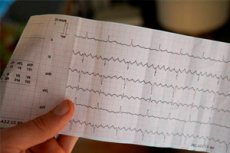Study shows 'superior' results for treating atrial fibrillation
Last reviewed: 14.06.2024

All iLive content is medically reviewed or fact checked to ensure as much factual accuracy as possible.
We have strict sourcing guidelines and only link to reputable media sites, academic research institutions and, whenever possible, medically peer reviewed studies. Note that the numbers in parentheses ([1], [2], etc.) are clickable links to these studies.
If you feel that any of our content is inaccurate, out-of-date, or otherwise questionable, please select it and press Ctrl + Enter.

Atrial fibrillation (AF) is the most common form of arrhythmia, or irregular heartbeat, in the world, affecting millions of people. In a study published in Heart Rhythm, researchers from Brigham and Women's Hospital, part of the Mass General Brigham health system, analyzed real-world clinical practice data to evaluate the impact of advanced treatments on patient outcomes after the most common procedure for AF: radiofrequency (RF) ablation.
One year after the procedure, 81.6% of patients were free of atrial arrhythmias, which is higher than rates reported in clinical trials, and 89.7% of these patients were not taking antiarrhythmic drugs. The results were presented simultaneously at the Heart Rhythm 2024 meeting in Boston, Massachusetts.
"When we implement better strategies for radiofrequency ablation, we can significantly improve long-term patient outcomes," said lead study author Dr. Paul Zey, an electrophysiologist and researcher at Brigham and Women's Hospital.
"Using highly trained operators using advanced techniques, we report excellent short- and long-term clinical results, with over 80% long-term success rates and very low complication rates."
RF ablation uses radiofrequency energy to inactivate the heart tissue responsible for creating irregular electrical signals. Although the safety and effectiveness of RF ablation have previously been demonstrated in randomized, controlled clinical trials, the technique is constantly evolving, and little is known about the effectiveness and safety of the method outside of clinical trials.
The study used data from the REAL-AF registry, a multicenter registry that Zey co-founded in 2019 to evaluate long-term outcomes and clinical management in patients treated for AF. The registry includes more than 50 centers routinely performing a large number of RF ablation procedures and following current best practices, including a focus on pulmonary vein isolation, reducing or eliminating the use of fluoroscopy during the procedure, and using a shorter but more intense radiofrequency pulse to reduce procedure time.
"We looked at experienced operators and centers to make sure we were researching the best techniques that were already in use," Zey said. "Our motivation is to figure out the best approaches to RF ablation and to adjust and improve these approaches so that our results become even better."
Researchers assessed data from 2,470 patients in the REAL-AF registry who underwent RF ablation for paroxysmal AF, a form of AF in which symptoms come and go. For each patient, the team assessed the timing and technique of the procedure, and studied patient outcomes immediately after the procedure and after 12 months.
Zey's team reports that the procedures in the REAL-AF registry are more effective, safe and effective compared to data from randomized clinical trials. One year after the procedure, 81.6% of patients were free of atrial arrhythmia, and 85.7% of patients were free of AF. In addition, 93.2% of patients reported no arrhythmia symptoms during the follow-up period.
Average procedure time was also significantly shorter, improving patient safety by reducing time under anesthesia and allowing hospitals and operators to perform more of these in-demand procedures.
In the future, the researchers plan to continue to improve the RF ablation procedure for both paroxysmal AF, which is the focus of this study, and persistent AF.
"It's an ongoing endeavor," Zey said. "An important next step will be to apply similar strategies to understand how this procedure can be improved for patients with persistent AF, which is more difficult to treat than paroxysmal AF."
In the future, Zey argues that the registry model used in this study could be easily adapted to optimize other medical procedures in electrophysiology and beyond.
"In addition to being research, the registry is a healthcare training network. We are not only evaluating the best approach to RF ablation; we are also learning from each other," Zey said. "The goal is to disseminate best practices to all operators and centers."
